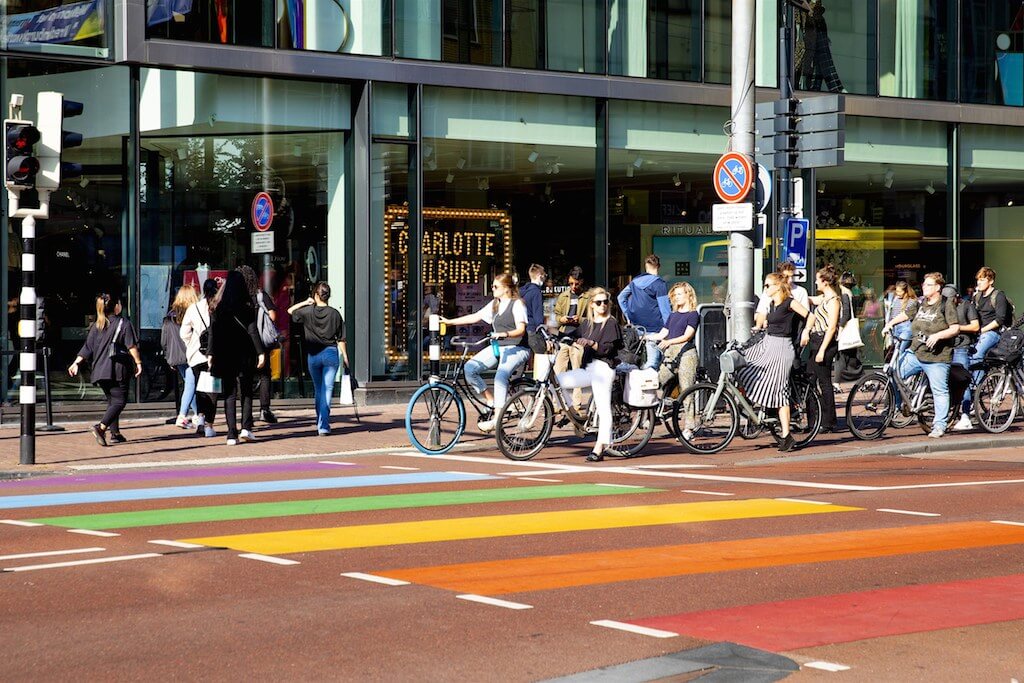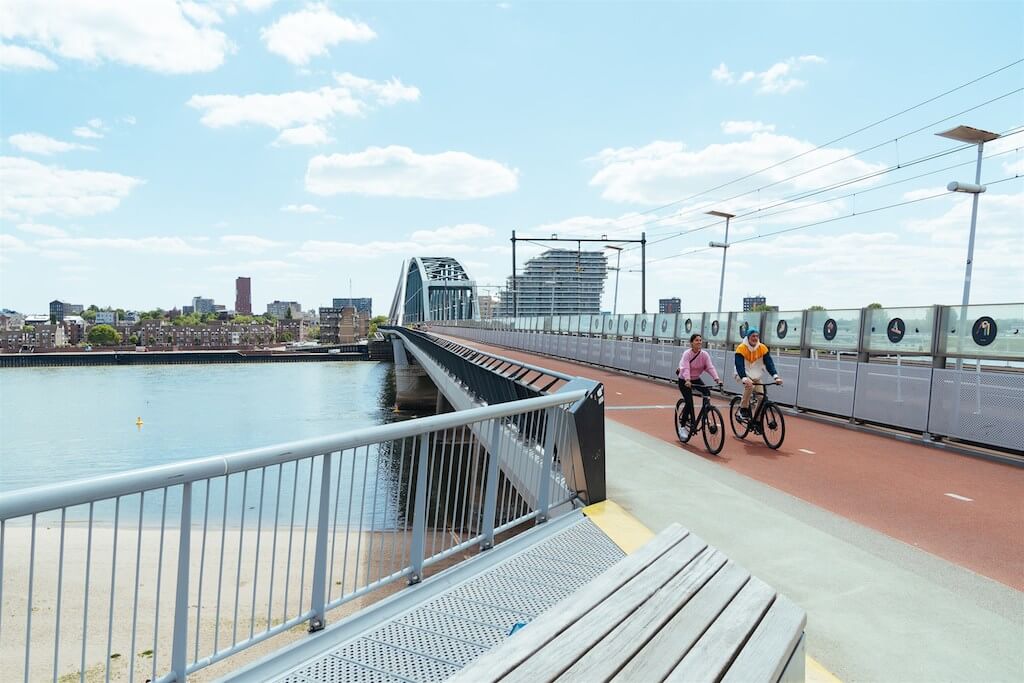Autumn Gear Guide
Find inspiration in our Gear Guide that will keep you out on your bike through wind or rain.
Download NowBeautiful photos of Dutch cycling infrastructure and culture can be found everywhere on social media. And while these images offer a tangible glimpse at an “end game” to which all cities should aspire, it’s important to understand that getting more people cycling isn’t—in and of itself—the end goal. Rather, cities in the Netherlands use the […]
Beautiful photos of Dutch cycling infrastructure and culture can be found everywhere on social media. And while these images offer a tangible glimpse at an “end game” to which all cities should aspire, it’s important to understand that getting more people cycling isn’t—in and of itself—the end goal. Rather, cities in the Netherlands use the bicycle as a tool to reduce car dominance and dependence and improve the equity, safety, and livability of their streets. In our book “Curbing Traffic: The Human Case for Fewer Cars in our Lives”, we spell out numerous practical ways that decision-makers around the world can translate best practices from the Netherlands into their own context. Here are the five most important ones:

Rainbow zebra crossing in the Netherlands city of Utrecht (photo: Iris van den Broek)
As Dutch transport planners have discovered over the years, the most important part of an effective cycling plan is the car plan. Measures that offer an attractive alternative to driving (“the carrot”) must be complemented with efforts to make driving indirect and inconvenient (“the stick”), thereby restricting through traffic and slowing down local traffic. This is best accomplished through a traffic circulation plan, which purposely prevents drivers from cutting through sensitive residential and commercial areas by pushing them to a series of outer “distributor roads” the moment they leave their front door. Not only does this create streets that are more welcoming for people of all ages to walk and cycle, but it also makes those desirable modes more direct and convenient within short- to medium-distances.
When it comes to calming traffic in cities, the reality is that engineering—not education or enforcement—is the single biggest influence on the success of that scheme. The desired speed and behavior is achieved not by passively posting a sign (the police can’t be everywhere, and drivers will travel as fast as they feel comfortable), but by actively engineering means that force drivers to reduce their speed and increase their vigilance, such as reduced width, speed humps, raised intersections, chicanes, one-way features, and changes in texture. Police in the Netherlands does very little traffic enforcement. If too many drivers speed on a street, it is deemed a design failure and sent back to the drawing board.

To provide for a maximum diversity of users and journeys—taking distance, speed, and destination into consideration—Dutch planners have learned to look beyond individual bike lanes in response to specific incidents and opportunities, and think more holistically at the network level. These fine-grained networks (using grid meshes as tight as 150-meters or 500-feet) see past the “normal” 9-to-5 commuting patterns, instead connecting places where residents live, work, shop, learn, and recreate; making it possible to cycle “from anywhere to everywhere” in their city. Using best practice established over five decades of trial-and-error, design manuals now stipulate that all cycling networks must reflect five principles: cohesion, directness, (road and social) safety, attractiveness, and comfort.
Knowing a network is only as good as its weakest link, and that most collisions occur at these points, the Dutch-style “protected intersection” is a staple throughout the Netherlands and has been slowly permeating countless other global cities. Whether a signalized (i.e. traffic lights) or unsignalized (i.e. roundabout) junction, its design elements force visual contact between users and require a collaborative approach for each of them to succeed. For drivers, a 12-meter (40-foot) turning radius combined with a 5-meter by 5-meter (16-foot by 16-foot) curbside island means, when turning right, they approach the cycle path at a nearly 90-degree angle, bringing cyclists into clear view and reducing the chance of collision. Paired with an obligatory island at the midpoint of the crossing, the entire design of the intersection ensures that people of all ages and abilities can happily navigate these exchanges, trusting their fellow road users to act in a way that is anticipated.
Rather than view cycling and public transport as competitors, Dutch planners have learned to embrace them as allies, and capture their synergy in a virtuous circle of sustainable travel. By feeding networks of cycling infrastructure to (train, tram, and bus) stations and stops, providing secure (and free) bike parking, and a last-mile rental at the end of their journey, the bike-train combination acts as one seamless mobility option: quick, convenient, affordable door-to-door travel that replaces hundreds of thousands of car trips each day. That means more cyclists using the cycle tracks, more passengers using public transport, and fewer automobiles on the streets; an impressive return for a modest investment in infrastructure and (more importantly) a multi-modal approach to mobility planning.
While they often appear like a fairy tale, too unique and perfect to be replicated elsewhere, Dutch cities show us what is possible when we reduce the supremacy of motor vehicles from our lives and prioritize the human experience. With the right leadership, traffic evaporation policies, as well as those aimed at improving social connection, reducing noise, addressing mental health and equity, and ensuring resiliency, cities of all sizes can provide the quality of life we now cherish. We understand why it is so important to have fewer cars in our lives. But now is the time to stop making excuses and start making it happen.
Check out our social media feed on Jan. 18 for a chance to win Chris and Melissa Bruntlett’s new book “Curbing Traffic: The Human Case for Fewer Cars in our Lives.”
Find inspiration in our Gear Guide that will keep you out on your bike through wind or rain.
Download Now
Leave a comment